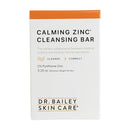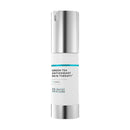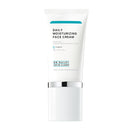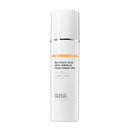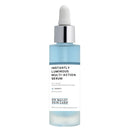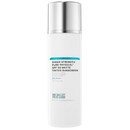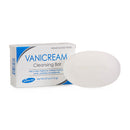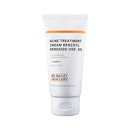Skin Cancer Awareness Month and Melanoma Monday

Skin Cancer Awareness Month and Melanoma Monday are always in May. It’s the perfect time to get your sun protection supplies and strategy set for our Northern Hemisphere summer. These designations were started by my professional society, The American Academy of Dermatology. The idea is to help everyone plan in advance, before stepping into the summer sun.
Yes, cumulative sun damage from summer sun can create skin cancer risk that lasts a lifetime. Sun burns increase the risk too. It's job security for dermatologists but we have plenty of job security. Skin cancer is a part of the job we can prevent with education and preparation – that’s why May is Skin Cancer Awareness Month and the first Monday, May 4th this year, is Melanoma Monday.
I’m going to share the sun protection checklist that I use for my family as we prepare to spend more time out in the warm UV rays. It’s the same thing I teach my patients here in California.
Dermatologist’s Skin Cancer Awareness Month Sun Protection Check-List.
#1. Be sure you have all the right sunscreens you will need for your summer plans:
Check expiration dates on your sunscreen, never rely on expired products because they won’t work as anticipated – my husband proved this years ago with a day of spring high weed mowing and old sunscreen he grabbed out of our kitchen junk drawer.
Get daily wear sunscreens that you love and are willing to apply every day as you get ready to start you day:
- Get a daily wear product for face.
- Get a daily wear product for non-facial skin such as neck, chest, forearms, legs and all skin you anticipate exposing this summer.
Get water resistant sunscreen if you plan to swim, sweat and be wet in the sun this summer.
I recommend mineral zinc oxide sunscreens because I only trust mineral physical particle protection. All my sunscreens contain zinc oxide. Some are entirely zinc oxide and others contain additional UV filtering ingredients. My Sheer Strength Pure Physical Sunscreens contain the most advanced micro zinc oxide for easy to use mineral sun protection.
#2. Get your sun protection clothing in order to protect skin from UV.
 UPF 50 fabric protects your skin without sunscreen. Try to like the idea of covering as much skin as possible with UPF 50 fabric and relying on sunscreen for what little skin is left exposed. This is the basis of new recommendations by the American Academy of Dermatology. I’ve of course been saying it for years because it makes sense.
UPF 50 fabric protects your skin without sunscreen. Try to like the idea of covering as much skin as possible with UPF 50 fabric and relying on sunscreen for what little skin is left exposed. This is the basis of new recommendations by the American Academy of Dermatology. I’ve of course been saying it for years because it makes sense.
Not all UPF clothing provides protection that lasts. Replace worn clothing with new if you plan to rely on it for tasks like hiking, gardening etc. I like Coolibar Sun Protection Clothing because their fibers protect for the lifetime of the garments. I wear their long sleeve cotton tees all summer when outside hiking or gardening. I have coverups to protect my arms for times when I want to wear something else.
If you plan to swim, think about wearing a swim shirt and swim tights. Think of the sunscreen you’ll save!
#3. Create shade you can rely on for sun protecting your skin.
We will be going out less in 2020 so this means creating shade at our own homes. I just got out my umbrellas for outdoor tables. I rely on them to lower my UV exposure while I enjoy sitting outdoors. Whether your home has a garden, a balcony or a patio be sure to create shade for your skin while you enjoy the breeze.
Get sunhats you will wear to create mobile shade. Your head and neck account for the highest risk skin for skin cancer. A hat blocks tons of UV rays from hitting cells in this ‘prime real estate’.
Specifications for a Dermatologist Approved Sun Protection Hat:
- 3-5-inch full circumference brim
- Coverage of the top if your scalp
- UPF 50 material
These are the specs for an adult hat. A child's head is smaller and a 2-inch brim may create enough shade. Ball caps and visors never give enough sun protection. Get a real sun hat that you will wear, feel good about and will use daily. I recommend going simple – trusty, not expensive and something you are willing to use, abuse and replace as needed. I carry a rolled-up bucket hat in my purse from now until late fall.
A UPF 50 sun parasol creates mobile shade too. I personally use one for when a sun hat is not something I want to wear. I also use it when I am somewhere so hot and humid that I just can’t comfortably wear a long sleeve shirt.
Click here to see my dermatologist sun protection resources including sun hats, sunscreens and other sun protections supplies. These are the sun protection tools that I use for myself, my family and my patients.
#4. Know your UV exposure so that you are certain that you are using enough sun protection
I love my  UV Detecto Ring for the surprises it brings. You’ll be surprised how much reflected light there is coming off walls and pavement. Yep, that ring colors up in the most unusual places – proving that UV rays are sneaky. Try testing windows, clothing and shade and prepare to be blown away. We send you a free Detecto Ring with a purchase of my Sheer Strength Pure Physical SPF 30 Water Resistant Sunscreen Spray. These little rings make great educational toys and fun gifts.
UV Detecto Ring for the surprises it brings. You’ll be surprised how much reflected light there is coming off walls and pavement. Yep, that ring colors up in the most unusual places – proving that UV rays are sneaky. Try testing windows, clothing and shade and prepare to be blown away. We send you a free Detecto Ring with a purchase of my Sheer Strength Pure Physical SPF 30 Water Resistant Sunscreen Spray. These little rings make great educational toys and fun gifts.
Dermatologist Sun Protection Infographic to share for Skin Cancer Awareness Month.
 I created my Sun Protection Sun Up to Sun Down Infographic years ago. It’s even more relevant today now that other authorities have started recommending sun protective clothing as your first line of UV defense instead of sunscreen. You’ll notice that the steps are in the exact reverse order than you’ve been taught before. This is the best way to create sun protection for your skin. Share the infographic with friends and family. Use the share links below on this page or you can also click here for the infographic page and share it from there. I teach that your first step in sun protection is to '"cover up" by wearing clothing that blocks UV rays then ASK if your uncovered exposed skin is protected:
I created my Sun Protection Sun Up to Sun Down Infographic years ago. It’s even more relevant today now that other authorities have started recommending sun protective clothing as your first line of UV defense instead of sunscreen. You’ll notice that the steps are in the exact reverse order than you’ve been taught before. This is the best way to create sun protection for your skin. Share the infographic with friends and family. Use the share links below on this page or you can also click here for the infographic page and share it from there. I teach that your first step in sun protection is to '"cover up" by wearing clothing that blocks UV rays then ASK if your uncovered exposed skin is protected:
A: Apply sunscreen that’s broad spectrum SPF 30+ as directed to all exposed skin.
S: Shade – create it with a hat and seek the shade
K: Know your UV exposure and up your sun protection strategy when UV exposure is intense.
Use May to get your sun protection supplies stocked up and ready.
Use May to also take inventory of your skin cancer risk.
Take inventory of your skin spots. Watch them for change as you go through summer. Summer UV rays put you at increased risk of skin cancer because UV suppresses your skin’s immune system that helps to prevent skin cancers. If a spot changes, get it checked. That’s tricky with the COVID pandemic but you still need an exam if a spot is changing.
I always see more skin cancers after summer. In 30+ years of practicing dermatology I can count on making more cancer diagnosis in the fall. It’s because sun causes skin cancers to manifest due to both UV induced DNA mutations and the UV induced skin immunosuppression. Take inventory of your spots. Enlist a friend or partner for your back. Keep an eye on them, sun protect your skin and enjoy summer as best we can in this new COVID Pandemic era.
Summer will be interesting this year, but it will involve sun. Be prepared – go soak up the sun safely! I'm planning to!!
References:
Savoye I, Olsen CM, Whiteman DC, et al. Patterns of Ultraviolet Radiation Exposure and Skin Cancer Risk: the E3N-SunExp Study. J Epidemiol. 2018;28(1):27‐33. doi:10.2188/jea.JE20160166
Stephen E. Ullrich, Mechanisms underlying UV-induced immune suppression, Mutation Research/Fundamental and Molecular Mechanisms of Mutagenesis,
Volume 571, Issues 1–2, 2005, Pages 185-205 https://www.sciencedirect.com/science/article/pii/S0027510704004944?via%3Dihub
Didona D, Paolino G, Bottoni U, Cantisani C. Non Melanoma Skin Cancer Pathogenesis Overview. Biomedicines. 2018;6(1):6. Published 2018 Jan 2. doi:10.3390/biomedicines6010006


